Women on women
ho
Eleven young members of the FAD associations tell us about their female referents and gender equality in their disciplines.
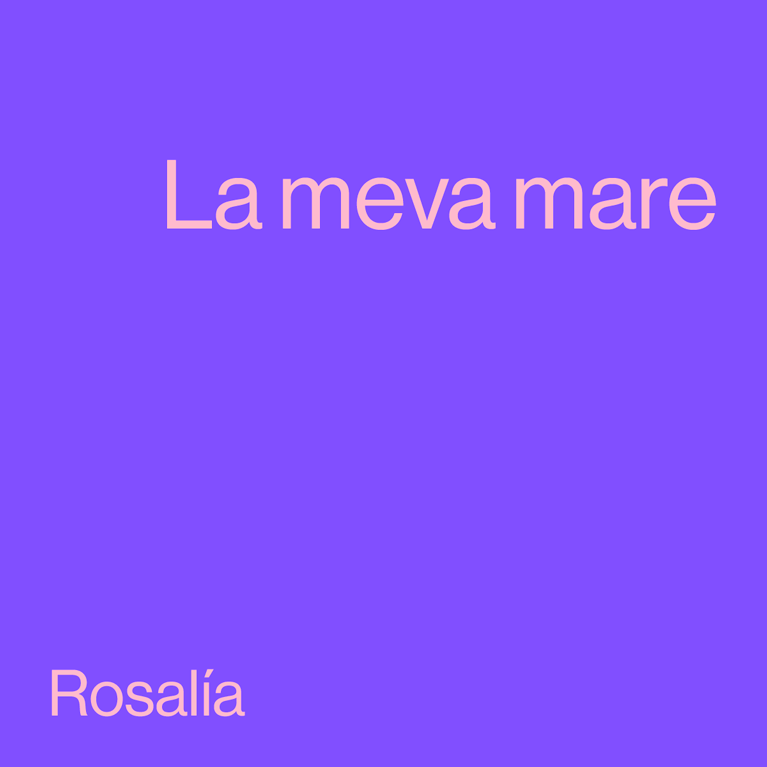
This next March 8, International Women’s Day, we have chosen to celebrate women giving them centerstage. We present a selection of the youngest members of the different associations of the FAD, who have shared with us the names of the women who have inspired them most in their sector, referents in other disciplines and their opinion on gender equality.

Nuria Farré
Artist, A-FAD Member
Website
What are your female referents in your discipline?
Jenny Saville is one of my favourite painters because of the power of her work and the sensations she creates in the viewer. Alyssa Monks is an artist that I discovered at university as a result of my final project and later she was my teacher in a course she gave in Seville, she really taught me how to use the brushstroke in favour of the volume and texture of the work. Georgia O’Keeffe for her synthetic paintings, but full of content, and her importance as one of the mothers of modernity in American and global art. Sophie Calle for the themes she touches, which interest me a lot since her own intimacy is her work and, in addition, she does it with a wonderful sensibility.
There are many other artists that interest me such as Julie Mehretu, Louise Bourgeois, Mereth Oppenheim, Carmen Calvo, Paula Rego, Vivian Maier, Cindy Sherman… Recently I discovered Mireia Sallarés in Filmin and I was fascinated by her work.
Which are other women you look up to?
The story of Peggy Guggenheim is amazing: her strength and her ability to lead her life and finally go down in history as one of the most influential art collectors of the 20th century. In that note, I am also very interested in Gertrude Stein.
I also think a lot about the literary representative Mónica Martín when I have to face the professional, say legal, part of my work. She is a natural leader with unrelenting strength and for me, she is a reference in that regard. Whenever I have to deal with galleries or contracts I ask myself “what would Monica do?”.
My mother, who is a technical architect and has nothing to do with the art world, has a character similar to all these strong women who have had to move forward in a world of men. I think that’s why they are the first ones I think about when they ask me about references.
What do you think is the status of your discipline in relation to gender equality?
Gender equality in the world of painting is a drama. 80% of the students of Fine Arts are women and, nevertheless, in the professional world the percentage is inverted and more than 80% of artists are men, not to mention the difference in the money received for their works. In addition, women often have to combine their artistic career with some other work, usually teaching, as is my case.
In relation to this topic, it is very interesting a study that Anna Fando is doing under Fem Art, the archives of Ca La Dona, where she is drawing very interesting conclusions about the artists who have participated in exhibitions and all kinds of events during the 25 years of Fem Art history. The situation is precarious, but personally I have hope, we are better than we were and that is why we must continue striving to conquer the rights that would have never been denied to us.

Liliana Díaz
Artist, A-FAD Member
Website
What are your female referents in your discipline?
Ana Mendieta, Louise Bourgeois, Eva Hesse, Frida Kahlo, Tacita Dean, Rachel de Joode, Remedios Varo, Georgia O’Keeffe, Meret Oppenheim, Alicja Kwade, Jeanne Claude, Rebecca Horn, Teresa Margolles and Chiharu Shiota.
Which are other women you look up to?
Susan Griffin author of «Woman and nature», Carlota Guerrero, Zaha Hadid, Marina Abramovic, Björk, Rosalía and Mónica Mayer.
What do you think is the status of your discipline in relation to gender equality?
It is changing very slowly. Unfortunately, there is still harassment within the artistic world and women are still afraid to report. In Mexico, a movement emerged where Twitter accounts were opened to report anonymously through the Metoo hashtag and it was devastating to see the number of complaints. I am concerned that the artistic field is still not a safe space for women. In terms of visibility, women have more and more spaces to exhibit their work and where they can be heard. I have attended several women or mixed exhibitions, but the most acclaimed remain of men.
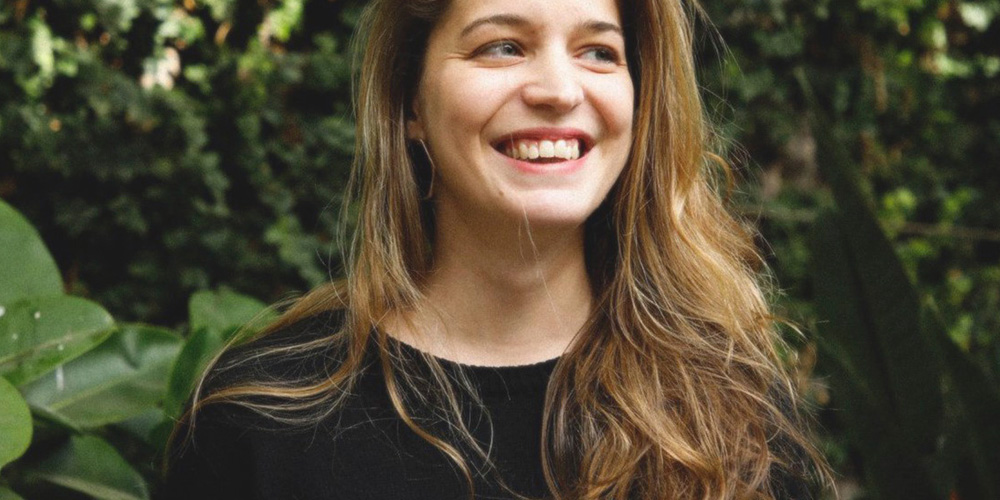
Julie Devisme
Artist, A-FAD Member
Website
What are your female referents in your discipline?
The biggest female reference in my discipline, textile design, would be Anni Albers. She is one of the most important artists of the twentieth century since she was the one who invented the concept of textile art: how textile, previously considered only as crafts, could also be a way of expressing herself artistically. The other female reference that inspires me in my discipline is Sheila Hicks. She is an American artist who lives and works in Paris. What fascinates me about her work is her ability to work with textiles in large dimensions, but also to elevate them to the status of contemporary art.
Which are other women you look up to?
I love and I’m very interested in the life and work of French film director Agnès Varda, who passed away last year. I consider her an incredible woman. Throughout her whole life, she was always very curious, humble and eager to meet people, enter their world and then tell their story, in her own way. Her films all have visual and emotional poetry that inspires me a lot. I am also very inspired by the work of the French artist, photographer and writer, Sophie Calle. Her work as an artist is inspired directly from her own intimate life to create works. Also, like Agnès Varda, she likes to create and invent stories and projects from the lives of other people around her.
What do you think is the status of your discipline in relation to gender equality?
The situation of my discipline, textile and embroidery, in relation to gender equality is very particular, since the technique of embroidery was always, by tradition, related to women, who worked at home sewing or doing textile or embroidery work. Nowadays, it is a discipline that has grown artistically and expanded a lot, but nevertheless it is still seen as a very feminine technique, and very homely. For my part, as a woman embroiderer in 2020, I try to fight against these prejudices and demonstrate that embroidery can be a current art and a powerful and innovative design tool.

Ester Arrebola
Graphic Designer, ADG-FAD Member
Website
What are your female referents in your discipline?
As for their work, some names that come to mind are Ena Cardinal de la Nuez, Ines Cox, Irma Boom, Larissa Kasper, Laura Coombs and Veronica Ditting.
Which are other women you look up to?
Bernice Alexandra Kaiser, Clara Campoamor, Germaine Dulac, Lilly Reich, Martha Rosler and Maruja Mallo.
What do you think is the status of your discipline in relation to gender equality?
The situation of women, inside or outside the design discipline is beginning to have their own space, but you just have to think about our “design icons” to see that it is still far from being egalitarian. I will take this opportunity to point out that, as always, education and training are essential to building societies and imaginaries. The majority of design professionals that are shown to us today from academic institutions are white men, so we have to work harder to teach, that there actually are trajectories, works and contributions of women designers throughout history.

Paula Lopez-Nuño
Graphic Designer, ADG-FAD Member
Website
What are your female referents in your discipline?
Irma Boom, and also Rocío Hidalgo, Edith Stone and Mariana Eidler, that I was lucky to have as teachers.
Which are other women you look up to?
Florence Welch in music and Mariel Madrid in dance.
What do you think is the status of your discipline in relation to gender equality?
On a personal basis, so far I have been part of mixed academic environments, with both female and male references. After graduating, I have noticed that the situation is different, although I still have to observe. Unfortunately, it is still necessary to claim the figure of the woman. I am glad that we are going through this feminist wave because, eventually, I would like it to be taken for granted that the important thing is capacity and not gender.

Laura Munné
Graphic designer, ADG-FAD Member
Web
What are your female referents in your discipline?
At first, they were Paula Scher, Deborah Sussman and Jessica Walsh, since they were some of the few women we heard of. Then came Astrid Stavro, Marta Gawin, Liza Enebeis, among others… But without going so far, we have great designers who inspire me like Laura Meseguer, Ingrid Picanyol, Ana Gómez, Núria Vila, Queralt Guinart, Marta Cerdà… And I’ve to say that many designers from Latin America, such as Laura Méndez or Nubia Navarro, are also of great inspiration to me.
Which are other women you look up to?
You can get inspiration from all creative women, but I have always been attracted to the work of Louise Bourgeois, Nan Goldin, Sophie Calle, Laia Abril, Ana Mendieta, Marina Abramovic, Pilar Aymerich, Mireia Sallarès, Es Devlin, Ilse Crawford, Zaha Hadid, Joana Biarnés, Virginia Wolf, Simone de Beauvoir, Marina Garcés, Judith Butler, Sofia Coppola, Anna Oset, Ana Juan, Paula Bonet, Neri Oxman, Dimitra Milan…
What do you think is the status of your discipline in relation to gender equality?
Given that we have gone from invisible to visible, obviously something has improved, but we are still under a cisheteropatriarchal society. In the United Kingdom, only one in five designer people is a woman, and although they are more than twice as many women who study design as men, the workforce falls indisputably upon them.
The tasks within design studies and other disciplines continue to be divided between productive and reproductive, and because of the education we receive, according to our gender and genitals. Thus, women end up developing the reproductive tasks that are necessary for everything to continue working, but are invisible, while men continue to carry out productive tasks, which are those that receive more public recognition.
That is why for so many years it was very difficult for women designers to find female referents and, consequently, made us think that it was not an area in which we could participate, not for lack of creativity, but for the simple fact of being women. Luckily, thanks to initiatives like Ladies, Wine & Design or Alphabettes, more meeting points are originating between design and activism, where women can practice sorority, inspire each other, and generate references for future generations.

Julia Esqué
Product Designer, ADI-FAD Member
Web
What are your female referents in your discipline?
I am very interested in the work of Sheila Hicks and Annie Albers. Also by Inga Sempe; I like her delicacy in the making and the way she works surfaces and textures.
Which are other women you look up to?
Pamplona’s band «Melenas». It is a band formed by four girls, on the guitar and voice is Oihana Herrera, a good friend who combines the band with graphic design. They sound amazing and I greatly admire their bravery. Also the Guerrilla Girls and her motto “Do women have to be naked to get into Met Museum?” are a big inspiration, I think they were a big push in the 80s.
What do you think is the status of your discipline in relation to gender equality?
I think that historically women have had difficulties in all professions and creative disciplines have not been a true exception. When I studied, most references were male, except for some cases like Ana Mir or Nani Marquina.
I think that from the schools where design is taught it is important that the presence of female referents becomes normalized, it makes more girls / women feel interested and capable of choosing that career. Specifically, the furniture industry is still largely led by men and, in my opinion, this fact still has consequences for the discipline.
Nevertheless, I am optimistic and I think that we are observing a deep progress regarding the valuation of feminine work within the world of design, and I firmly believe that just now is a good time for us. There is an interest in hearing the voices of women. There is more presence of activism, there is an energy that pushes to talk about all this and there is an intention to reverse the situation.
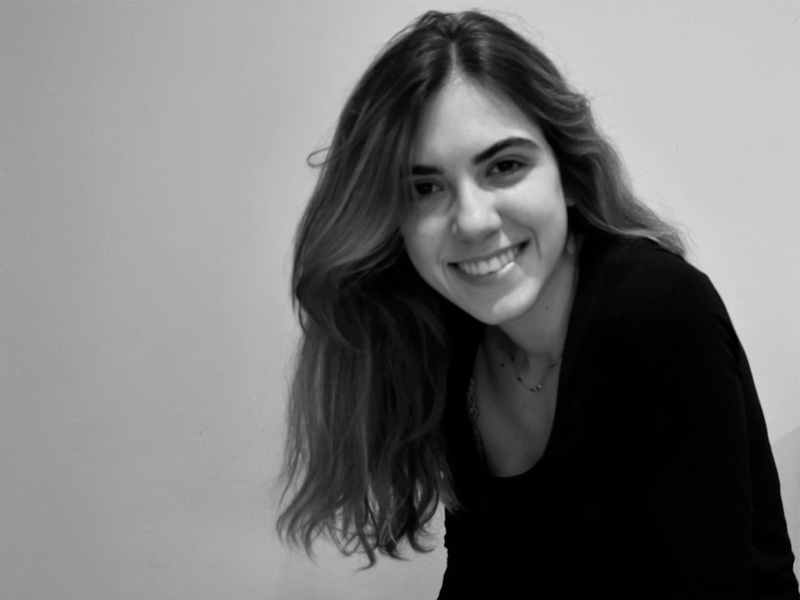
Ariadna Guàrdia Górriz
Design student, ARQUIN-FAD and MODA-FAD Member
Website
What are your female referents in your discipline?
I am passionate about the world of design and I never get tired of discovering new forms of expression and that is why I am a member of ARQUIN-FAD and MODA-FAD, despite being mainly studying product design and graphic design.
As a student, I have a lot of influence from Nordic design, such as the Icelandic designer Thorun Hannesdottir. However, I have a great interest in jewellery design and my most important references are the Andorran designer Nerea Aixàs and the Catalan Júlia Garriga and Anna Mata i Riera.
Which are other women you look up to?
When creating and devising my designs I am inspired by all those experiences of my life to be able to capture the best of me in each piece. It is here that the influence of other female personalities such as Catalan photographer Marta Mas with her exceptional portraits comes to my mind; the creative director Gigi Vives with her particular style and influence in the fashion world; the entrepreneur Nina Urgell with her recent brand New Order Midnight, which for me is elegance with all its essence; and singer-songwriter Clara Peya, who inspires me with her powerful melodies.
What do you think is the status of your discipline in relation to gender equality?
My experience as a design student at the University of Barcelona shows me that there is still inequality in this discipline. The majority of students are women and, nevertheless, although there are a higher number of female graduates, the majority of the teachers who teach us are men. This reality is also reflected in the world of work where there are many women, but success is usually more focused on men. Personally, I think there are many women with great potential in the world of design that deserve greater recognition.
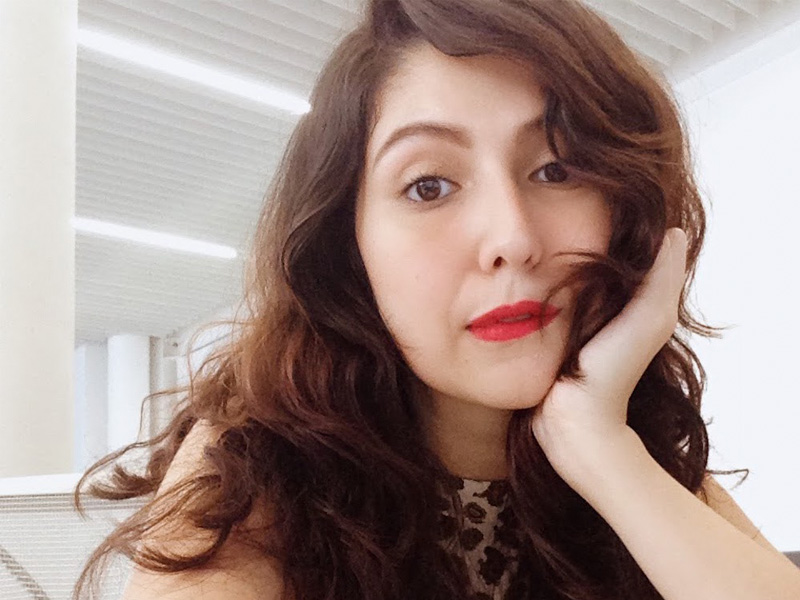
Akna Márquez
Architect and Materials Researcher, ARQUIN-FAD Member
Website
What are your female referents in your discipline?
Beyond referents of the modern movement such as Ray Eames, Charlotte Perriand and Lilly Reich, I also visit the philosophy of Lina Bo Bardi, who saw as work and people inseparable from the first sketch, nourishing herself from the disorder, vegetation and frenzy of Brazil. As designers, we often become obsessed with perfection. We focus on building something that “deserves” to appear in a magazine or win prizes at a level that seems like the disorder of life hinders the perfection of design, when the opposite could be happening.
I am inspired by many current references as well: in architecture I find the games of form and technology of Zaha Hadid fascinating, and I admire Neri Oxman’s futuristic vision, for her exploration at the level of design, biology, computation and engineering of materials.
Which are other women you look up to?
I could mention many, among them Leyla Acaroglu, for her work at the level of research and education on sustainability, innovation and circular economy; Maria Popova, BrainPickings’ writer and curious about art, philosophy and culture; Jessica Helfand and Debbie Millman for their work as authors and content broadcasters; and Jessica Walsh, creative director and founder of &Walsh, formed by a great women’s team.
What do you think is the status of your discipline in relation to gender equality?
As in many disciplines, there are not enough female figures in leadership position. However, the talent of women who are doing incredible jobs and that must be recognized in their industry globally and not in separate listings of some top “women architects”, as if it were something unconventional, abounds. No specific listings are published for them.
It is also necessary to rethink many design elements based on specific data and studies in women, as Caroline Criado puts it in her book “Invisible Women: Exposing Data Bias in a World Designed for Men”. Part of the problem could be that both men and women have become accustomed to the male figure as standard, but, on the other hand, we now have more tools than ever to change it and make the world a fairer and more enjoyable place for everyone.
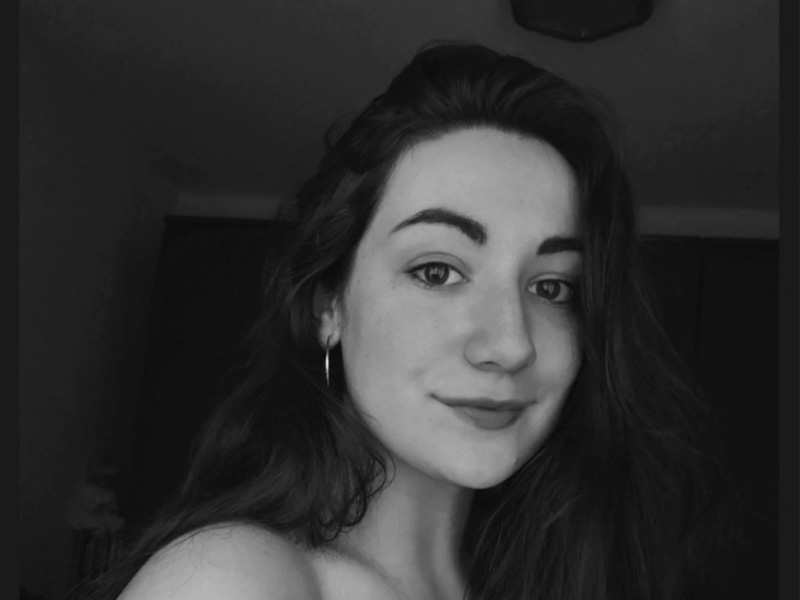
Núria Lafuente Matías
Designer, MODA-FAD member
Web
What are your female referents in your discipline?
Aniela Hoitink: She began combining mycelium, using its properties, with textiles to create flexible products. During personal research, her goal became the development of textiles that were formed exclusively of pure mycelium. Finally, she developed a method to retain flexibility without using traditional textile materials.
Suzanne Lee: She experiments in the cultivation of a material based on kombucha that can be used as a cloth or vegetable leather for clothing making. She is currently working on extending the lifespan of her bio-clothing line and, to get there, she says she needs advanced science, but with the right funds, she has the potential to come up with a radical alternative to conventional fabrics.
Montse Bayen and Núria Nubiola: creators of the Back to Eco brand in Barcelona, maintain the initiative to extend the useful life of used jeans, while fully maintaining the value of the original fabric. All the making of bags and accessories is done in socio-labour integration workshops or by hiring people at risk of social exclusion. They have now managed to create their own “infinit denim” yarn and fabric from used jeans. Their values are based on the circular economy, in all phases of the life of their products, and in the design of recycled and recyclable products. They also seek optimization in terms of sustainability in the choice of first purchase materials.
Which are other women you look up to?
Singer and writer Patti Smith. I started reading the book Just Kids and I could understand how there are infinite ways to see and feel things. I have read her poetry and listened to her songs later. She inspires me as a writer when it comes to expressing myself in a pure and analytical way. I simply feel deep admiration for her works.
The photographer and filmmaker Iness Rychlik. Since I discovered her photography I was attracted and impressed by the symbolic weight of her images. It claims the current situation of women portraying contradictions and parallels between the past and the present. I am inspired by the delicacy and strength of her work.
What do you think is the status of your discipline in relation to gender equality?
Currently, the big fashion brands are mostly under the power of a male figure, and many of them are characterized by belonging to fast fashion. However, in the field of sustainable fashion or textile biofabrication (creation of biotextiles), we find great female figures who are developing their projects with great solidity.
It is necessary to continue promoting a change for equality in the design sector and, in general, in all areas of work. We have a long way to achieve equal rights, same working conditions and destruction of that glass ceiling that, ironically, is too visible today. There are still ideas to evolve under the word designer.

Laura Garcia Guardans
Márketing and PR Manager, MODA-FAD member
What are your female referents in your discipline?
Before answering the question, I should define the discipline. I was working in the fashion industry, and I currently run the marketing and public relations department of a wonderful hotel in Barcelona. Despite being different industries, I find that there is a similarity when communicating fashion and hotels, especially when it comes to an experience linked to luxury. That is why I should perhaps focus my response on the world of communication. In this field, there are many women who do a great job in this profession. From Leandra Medine, who has found the formula to communicate fashion in a fun and casual way, through Sheryl Sandberg, a powerful voice in the social media industry, to Angela Ahrendts, who always manages to reinvent and revalue the companies for which works.
Which are other women you look up to?
I always liked Phoebe Philo’s philosophy. I consider her as one of the great ones, with strength and a lot of security, but she has often been left behind for the feminine touch that characterized her. In my opinion, there is no need to convey toughness to be taken seriously, I think you can be a woman and speak softly at the same time. And, although it may be a topic, my mother has always been a great example, every day. She is a great defender that we must, if one wants, of course, fight for both a personal and professional career, and that it is totally possible to achieve it. I am inspired by the women I surround myself with. Each of them has something unique, something that brings me and they are pure energy.
What do you think is the status of your discipline in relation to gender equality?
In the world of communication, it is very common to meet female colleagues, which is very fortunate. It is an industry that often speaks of emotions, perceptions, sensitivity, emotional intelligence… To communicate you have to put yourself in the shoes of the person who will receive your message, and I believe that empathy is something that women learn to develop from a very young age and then it grows as we create female circles to support us: the relationship between friends, mother and daughter conversations… Being surrounded by women can only be positive, both for a woman and for a man.
We especially want to thank the young members that participated and generously contributed to this homage. From the FAD we have repeatedly highlighted that there is still a lot to be done in the fields of architecture, art, graphic design and technology, among others, to achieve gender equality. That is why today we join them to celebrate the legacy of all local and international inspiring women that have been mentioned (115!), alive and dead, young and not so young, and from a multitude of disciplines. With a special mention to the mothers and so many other wonderful women who have inspired us. May the list continue in our heads, books, exhibitions, conferences, awards, management positions, etc., etc.
Happy International Women’s Day!